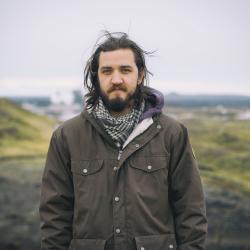The UN Refugee Agency (UNHCR) is tasked with both providing solutions for refugees, and monitoring and supporting different states in implementing international law. Its Northern Europe representative is Pia Prytz Phiri, who has visited Iceland on two occasions to observe and comment on how the nation deals with both “asylum seekers” and refugees. We sent her a few questions, asking about the UNHCR’s experience with resettlement refugees in North Europe and Iceland.
There seems to be this pervasive myth that many of the Nordic countries, especially Sweden, have historically approached refugee affairs in a misguided fashion—that they are now overflowing with refugees, creating untold problems and putting local culture at risk. Is there any truth to these claims?
Saving lives should always be a prerogative. Sweden, and all countries in Northern Europe, offer many good examples of successful integration initiatives and methods. Iceland’s family support system is widely disseminated as a good practise, and is currently being considered by countries starting new resettlement programmes. We are grateful for the work of the Icelandic Red Cross that has engaged actively with UNHCR to present its programme to countries in our region.
What mistakes have been made with accepting and meeting the needs of refugees? What can we learn from them?
UNHCR promotes that integration programmes are age-, gender- and diversity-sensitive. This is best done by actively engaging in direct dialogue with the refugees themselves. We have seen this implemented and working very well, for instance in Finland. The active engagement of civil society is an important factor.
Since 1956, Iceland has accepted a total of 549 refugees, with the government recently revealing plans to accept 50 Syrian refugees over the next two years (although it looks like the number will increase). Do you believe we can do better, or 50 a realistic number of refugees to accept, given the size of the country?
UNHCR is still in dialogue with the Icelandic government on the future Icelandic quota. The need for resettlement of the most vulnerable refugees will continue in the years to come. We appreciate Iceland’s interest in resettling refugees. UNHCR advocates that resettlement could also happen through enhanced access to family reunification, study visas and humanitarian admission.
You’ve commented on the Icelandic government’s willingness to make necessary changes suggested by UNHCR, even if the process has taken its time. What changes would you like to see them make this year with regards to the rights of refugees and asylum seekers?
Iceland has been a model country in its cooperation with UNHCR over the years. It has been ready to review its status determination procedure, its appeal procedure and its general effectiveness, and also has funded a study on statelessness in Iceland. All the processes have led to recommendations that are now being implemented. UNHCR is impressed with the commitment of Iceland and believes that the procedures implemented and the process itself will serve as an inspiration for other countries. It certainly has been a good practise collaboration.
Are you optimistic about the current situation?
UNHCR cannot afford to lose hope, but there is no doubt that all countries in Europe need to mobilise in full force around the current crisis. A common strategy, based on responsibility, solidarity and trust is needed. UNHCR has proposed the way forward.
—
See Also:
 UNICEF: Shock Must Be Met With Action
UNICEF: Shock Must Be Met With Action
These children and their families need help, and they need it now. The vast majority of those fleeing the conflict are still within Syria’s borders. About one third are in the neighbouring countries. Only a fraction has made it to Europe.
 Welcome To Iceland: A Walk-Through Of The Refugee Arrival Process
Welcome To Iceland: A Walk-Through Of The Refugee Arrival Process
When Iceland receives new refugees, the Red Cross plays a crucial and central role. Working alongside the various municipalities and government ministries, their mission starts a long time in advance as they train new volunteers to aid the refugees’ arrival, along with furnishing their new homes, stocking their fridges, helping assess individual needs, and coordinating a support network upon their arrival.
 Case Study: Ísafjörður As Safe Haven For Persecuted Families
Case Study: Ísafjörður As Safe Haven For Persecuted Families
In 1996, the people of Ísafjarðarbær welcomed thirty refugees into their community with open arms. After a period of preparation, six families of mixed Serbian and Croatian marriages from former Yugoslavia arrived to take shelter in the relatively small (pop. 3,500) fishing community in the northern Westfjords, through the combined efforts of the Icelandic state, the Red Cross, and Ísafjarðarbær’s municipal government. Having endured persecution, fear, flight and agonizing uncertainty, the six families were finally home.
Ísafjarðarbær Mayor: “We Will Gladly Welcome Refugees To Our Community”
“We Have To Do This Together”: Mayor Dagur B. On Acceepting “Hundreds” Of Refugees
Buy subscriptions, t-shirts and more from our shop right here!
















